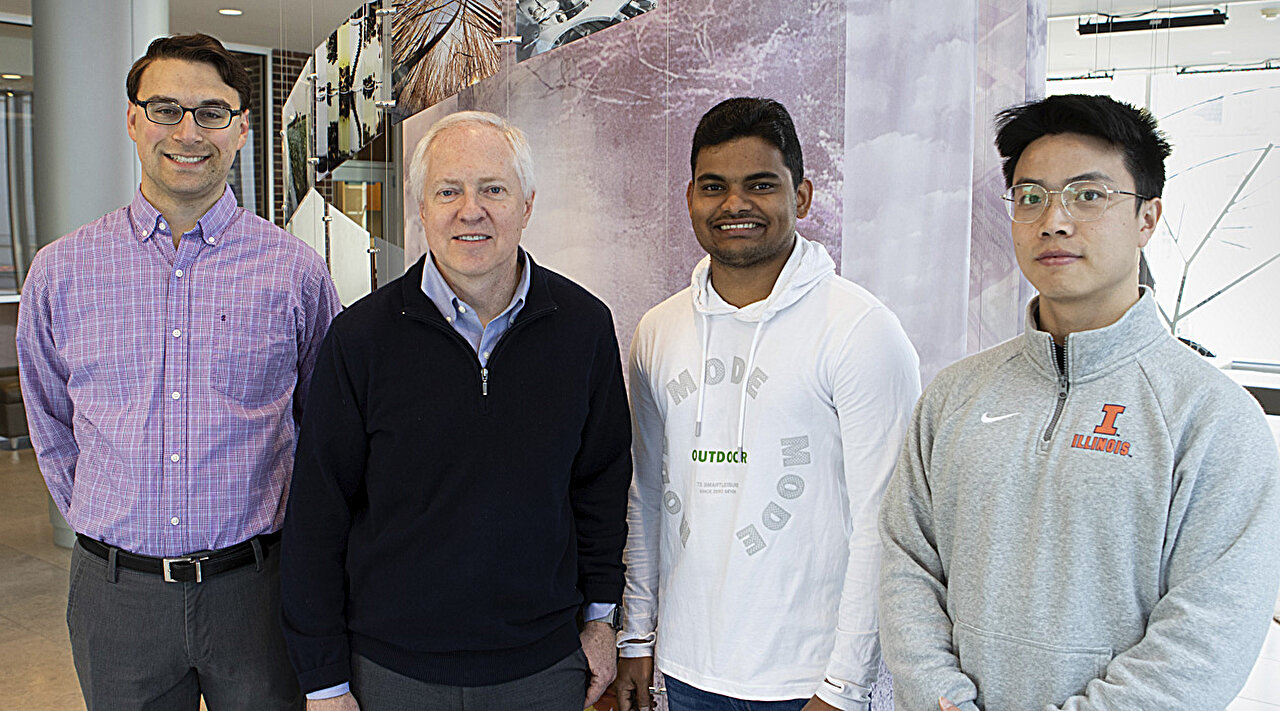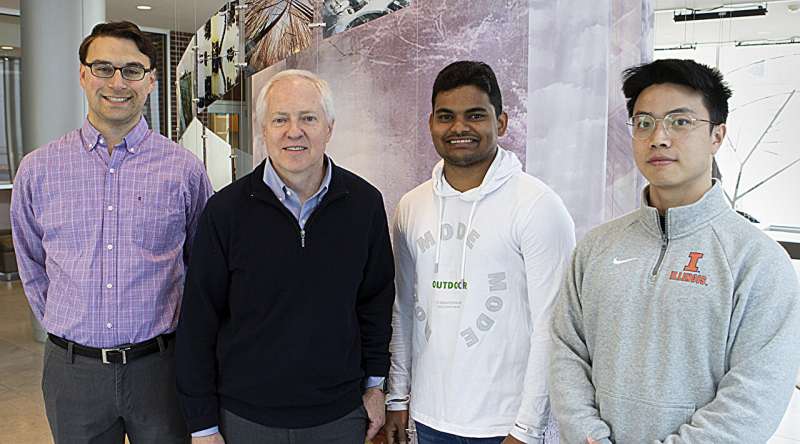

Biomarkers are small molecules of interest to researchers, because they can indicate underlying diseases, often even before symptoms even appear. However, detecting these markers can be challenging as they are often present in very low quantities, especially in the early stages of a disease. Traditional detection methods, while effective, usually require expensive components like prisms, metal films, or optical objectives.
In a recent paper published in Applied Physics Letters, researchers at the University of Illinois Urbana-Champaign have unveiled a novel approach to detecting low concentrations of biomarkers that paves the way for biodetection technology that is simple to use, highly sensitive, and surprisingly affordable.
“The goal of this technology is early diagnostics, to be able to detect molecules associated with diseases at very low concentrations, sometimes a few molecules per millions, very early on,” said Seemesh Bhaskar, a postdoctoral researcher in Brian Cunningham’s lab and first author on the study. “Looking for very small concentrations of micro-RNA, circulating tumor DNA, and exosomes, for example, can help determine whether a patient will develop cancer one or two years down the line.”
Early detection of biomarkers is crucial for predicting and managing diseases effectively. There are many strategies for measuring the presence and concentration of biomarkers, but a common approach involves binding them with a fluorescent molecule, called a fluorophore, which emits fluorescence when excited with light.
Bhaskar noted that while there are technologies adept at detecting these low levels of fluorescent biomarkers, they are often bulky and expensive, limiting their accessibility in health care, particularly in resource-limited areas.
The approach encompasses a novel phenomenon for detecting light, called radiating guided mode resonance, which utilizes photonic crystals—thin pieces of glass with small gratings on the surface. These gratings help direct the photons, which are small particles of light, emitted from biomarkers along a pathway via a steering effect. This pathway is “tuned” to match the wavelength of the fluorescence emitted by the biomarkers, optimizing light collection and enhancing detection sensitivity.
Bhaskar likens this to a rhythmic dance of light energy within the crystal, where light is amplified while taking on the properties of the photonic crystal. One property of the crystal, called polarization selection, equalizes the polarization of the light, making for clearer and sharper detection of fluorescence. Together, this can result in an output that is 100 times stronger.
“To me, this is a whole new way of looking into the properties of light itself,” said Bhaskar. “The photons adapt, change, and evolve as they pass through the photonic crystal. The light picks up new characteristics without losing its essence. It’s a testament to the adaptability and transformative power of light.”
Discovery of this new phenomenon sets the stage for future detection platforms that will be able to detect molecules at picomolar levels without relying on costly components, making biodetection technology more sensitive, accessible, and affordable.
More information:
Seemesh Bhaskar et al, Photonic crystal-coupled enhanced steering emission: A prism-free, objective-free, and metal-free loss-less approach for biosensing, Applied Physics Letters (2024). DOI: 10.1063/5.0203999
Provided by
University of Illinois at Urbana-Champaign
Citation:
New photonic crystal approach can enable sensitive and affordable detection of biomarkers (2024, May 31)
retrieved 31 May 2024
from https://phys.org/news/2024-05-photonic-crystal-approach-enable-sensitive.html
This document is subject to copyright. Apart from any fair dealing for the purpose of private study or research, no
part may be reproduced without the written permission. The content is provided for information purposes only.